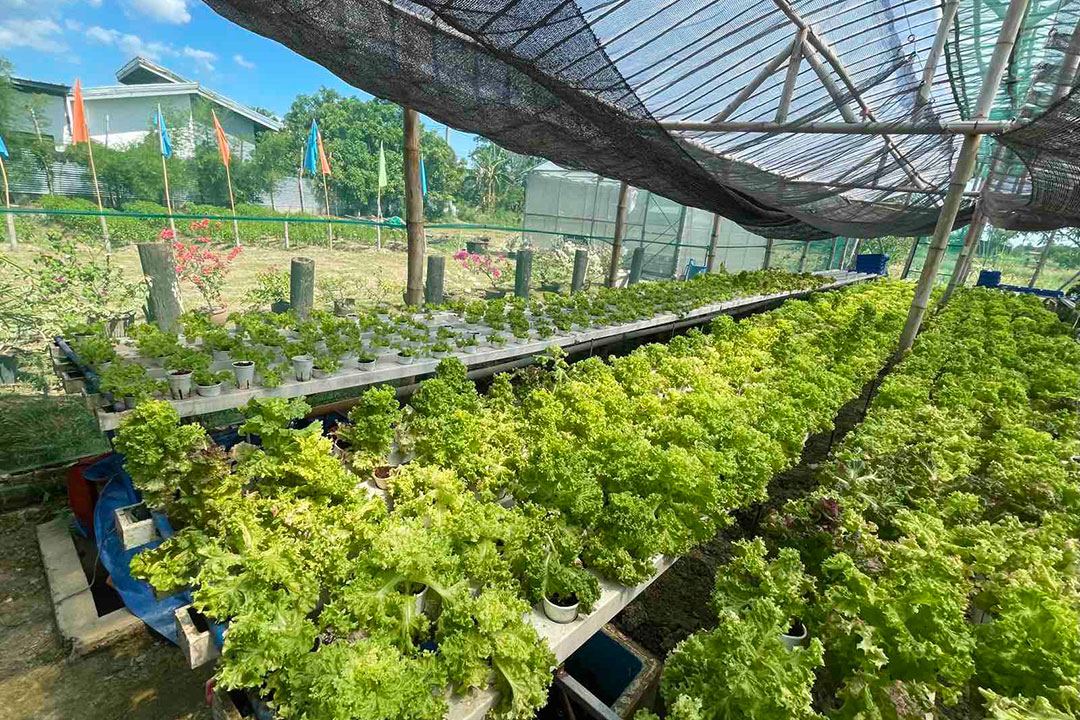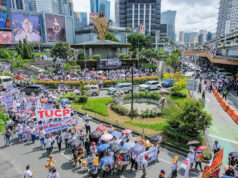Gen Z Filipino farmer pushes soilless farming

J.H.B. ZAPATA Integrated Farm, a hydroponic farm in Pampanga province north of the Philippines, wants young Filipinos to venture into soilless farming, using nutrient-rich water instead, as the country grapples with food security amid its dwindling farmers.
“You can do farming under the shade because you just need to place the plant on the pump,” farm owner John Harold B. Zapata, 24, told BusinessWorld in an interview. “Since it’s a soilless cultivation, you won’t touch soil and worms.”
Starting a hydroponic farm also requires minimal capital, he said.
Mr. Zapata started building his DIY (do-it-yourself) greenhouse in 2021 with less than a thousand pesos in capital and recyclable materials from the junk shop such as scraps of wood, bamboo and plastic sheets.
Before that, he armed himself with knowledge about hydroponic farming by joining Facebook groups and online forums on the subject. “I didn’t know anything about farming. I just knew I wanted to try,” he said.
The average age of Filipino rice farmers is 56 and climbing, and analysts predict a critical shortage of farmers in the next decade as young people show less interest in agriculture, threatening food security.
The problem is compounded by increasing farm input costs. Fertilizers, pesticides, machinery and irrigation systems are becoming more expensive, eating away at farmers’ modest profits.
The agriculture and forestry sectors had the most year-on-year employment decline in February, with 950,000 workers lost mainly due to typhoons that devastated farmlands, according to the local statistics agency.
Hydroponics is the farming technique of growing plants using a water-based nutrient solution instead of soil. It uses 90% less water than traditional farming and occupies minimal space.
After four years, Mr. Zapata’s greenhouse grew to a 1,700-square-meter farm, housing more than 2,000 heads of lettuce, basil, and arugula.
“People do not ask where the lettuce came from,” he said. “They do not ask if it came from an expensive greenhouse. What matters is that the produce is good.”
Mr. Zapata offers workshops and training for beginners interested in starting a hydroponic farm. Each session costs P2,000, which includes starter seeds and a marketing guide.
He has taught more than a hundred students since February and aims to reach a thousand by year-end.
“We just wanted to produce vegetables before,” he said. “Now, I want to produce not just vegetables but also a new generation of growers.” — Almira Louise S. Martinez
Mr. Zapata is one of the “changemakers” of the Movers of Tomorrow, a storytelling platform launched by MPT Mobility, the innovations arm of Metro Pacific Tollways Corp. (MPTC).
MPTC is the tollways unit of Metro Pacific Investments Corp., one of three key Philippine units of Hong Kong-based First Pacific Co. Ltd., the others being Philex Mining Corp. and PLDT, Inc.
Hastings Holdings, Inc., a unit of PLDT Beneficial Trust Fund subsidiary MediaQuest Holdings, Inc., has a majority stake in BusinessWorld through the Philippine Star Group, which it controls.



